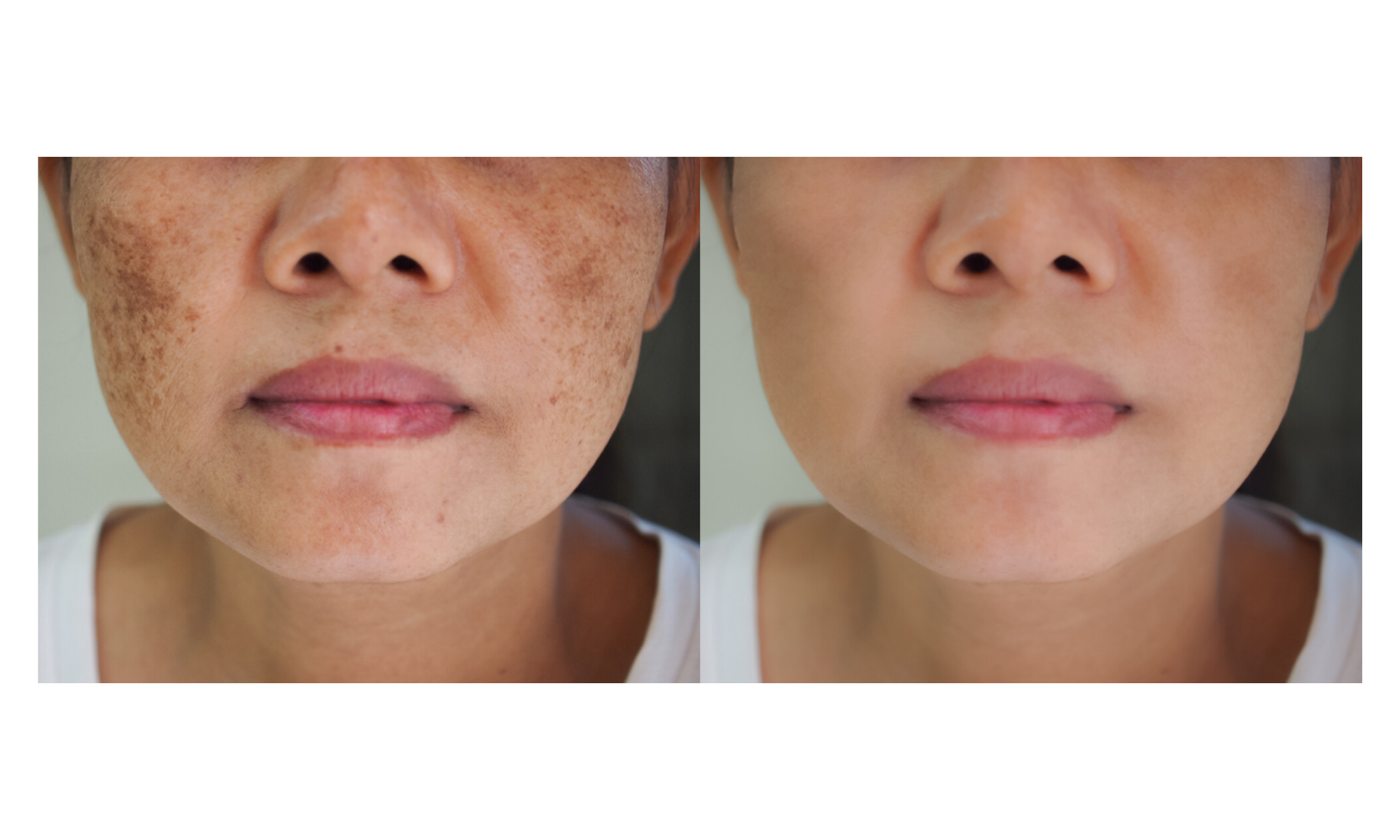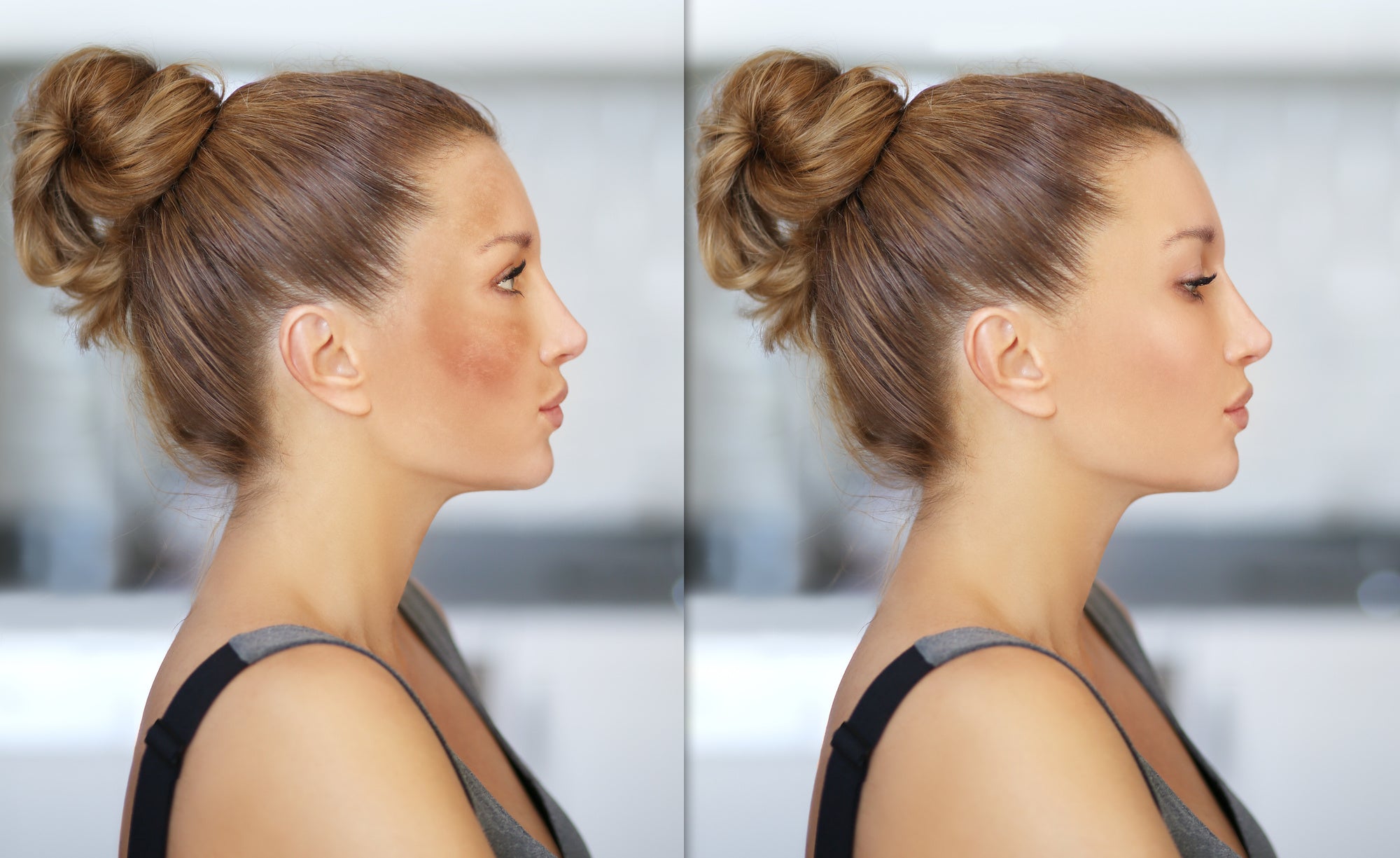
Melasma is Stubborn, Here's How Your Dermatologist Can Help
The sun can age you quicker than anything else.
We are taught to wear sun protection, but as the popular saying reminds us, we are only human!
Sun damage shows up on our skin in a variety of ways.
One common sign of sun damage is hyperpigmentation, which is a condition of irregular dark splotching on the skin. This occurs when too much melanin is produced, especially when the skin is unable to recover before another hit of sun exposure.
Today, we are focusing on Melasma, which is a form of hyperpigmentation.
Melasma occurs mostly in women. In fact, just 10% of people who get melasma are men.
Melasma shows up mainly on the face and can be difficult to treat.
We don't have all the answers yet and researchers are still working to understand this stubborn condition, however, there are many treatments available through your dermatologist to get back to clear, healthy skin.

Common Triggers of Melasma
Although we don't know the exact cause of melasma, there is a common thread amongst those who are affected.
Oxygenetix Advisory Board Member and skincare specialist, Debbie Thomas, explains, "The biggest cause of pigmentation is sun damage, but the other factors that can also play a part include hormones, genetics, medication, the aging process, illnesses and skin conditions like acne."
Here are some of the common triggers believed to cause melasma:
Hormones: The role hormone abnormalities play in hyperpigmentation is especially influential when it comes to melasma. An imbalance of hormones affects melanin production in the skin, causing melanocytes to produce too much color.
Debbie Thomas says, "it’s most common among women as it’s thought to occur when female sex hormones estrogen and progesterone encourage the overproduction of melanin when the skin is exposed to the sun."
Melasma is so common during pregnancy that melasma is sometimes called "the mask of pregnancy."
Genetics: Some have a genetic disposition to melasma as it tends to show up in families. Those with medium to dark skin are most commonly affected.
UV Light: UVA and UVB rays from the sun are major players in causing hyperpigmentation and worsen melasma. Recent studies show blue light emitted from computers and televisions can worsen melasma.
Skin Care Products/ Cosmetics: Skin irritations from cosmetic and skincare products can worsen melasma. Use non-comedogenic and fragrance-free formulas that help, not hurt, your skin, such as the Oxygenetix Foundations and Hydro-Matrix.
Treatments Available for Melasma
A combination of sun protection, topical medications, and cosmetic treatments are used to treat this chronic condition.
Cosmetic Treatments
Seeing your dermatologist or skincare professional is crucial in diagnosing melasma and treating it effectively. They will help you find the most suitable treatment for you specifically.
Board-certified dermatologist and Oxygenetix Advisory Board Member, Ava Shamban, uses a few different treatments in her practice for those with melasma.
Clear & Brilliant is a fractional laser treatment that triggers cell reproduction in the skin in order to improve texture and lighten pigmentation.
Microdermabrasion can remove dead skin cells and pigmentation from the surface layers of the skin in order to promote collagen production and less pigmented tissue production.
Cosmelan Peel can help treat melasma on almost all skin tones. It works by inhibiting tyrosinase, which is an enzyme in the melanin formation process. Cosmelan peels will leave the skin red and peeling for a few days, but are highly effective and can achieve results after just one peel, with a second follow-up for any remaining pigmentation.
For further information about Ava Shamban's practice visit her website: https://avamd.com
Oxygenetix Post-Procedure
Leading dermatologists use Oxygenetix after treatments to soothe the skin and provide a better patient experience. Oxygenetix is safe to apply after most cosmetic procedures. You can apply Oxygenetix Hydro-Matrix followed by Oxygenating Foundation to help support skin renewal while staying camouflaged.

Topical Medications
To continue to treat and prevent melasma, your diligence at home is crucial.
Your dermatologist may recommend a combination of topical treatments. Here are some of the topicals that have been known to be used by dermatologists for melasma.
Hydroquinone: A common treatment for melasma, hydroquinone works as a melanin suppressant.
Keratolytics: Tretinoin or alpha hydroxy acid removes already stained cells and enhances the skin lightening by allowing better absorption of the hydroquinone.
Corticosteroids: Your dermatologist may prescribe a steroid to aid the recovery process and help fade the color.
A Triple Cream: Sometimes the topical medicine recommended contains three medicines (hydroquinone, tretinoin, and a corticosteroid) in one cream.
Birth Control
Physicians analyze hormonal blood profiles and may recommend a change of internal hormonal therapy or birth control.
Sun Protection
SPF: Wear a broad-spectrum sunscreen during daytime, whether in direct sunlight or not. Reapply every 2 hours and right after getting out of the water, especially if you are towel drying.
Extra Protection: For even more protection from the sun, wear sunglasses and a wide-brimmed hat.
You must be diligent to see results, as melasma is one of the most difficult skin conditions to treat.
But with the help of your dermatologist, and taking care of your skin every day, you will see the results and gain back that beauty confidence.
**Please note that Oxygenetix does not provide or endorse medical protocols. This information is for educational purposes only. Always seek counsel from your dermatologist before starting any skin treatments.



Laisser un commentaire
Ce site est protégé par reCAPTCHA, et la Politique de confidentialité et les Conditions d'utilisation de Google s'appliquent.